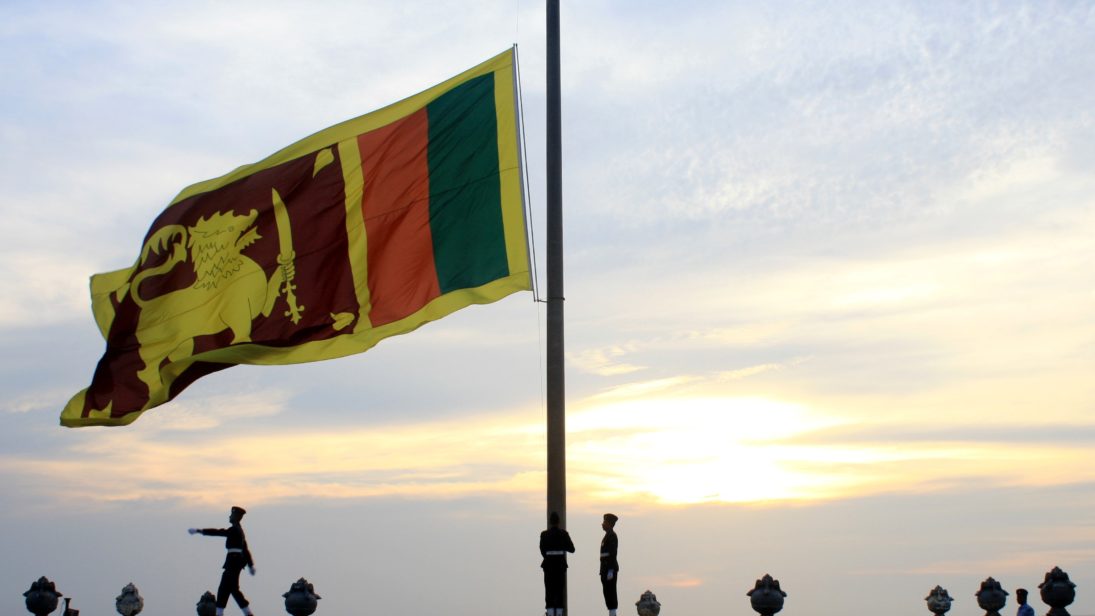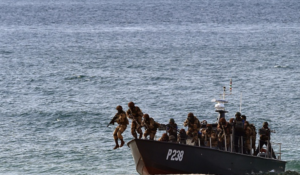
Within the broad category of maritime security—which encompasses dealing with piracy, terrorism, territorial disputes, trafficking, and natural disasters—an emerging global trend is the push for naval modernization. Naval modernization refers to how states improve naval capabilities by upgrading equipment and assets and apply modern military technology to the maritime sphere to secure their interests. In the Indian Ocean, recent developments such as an assertive and expanding Chinese presence and its competition with global and regional powers such as the United States and India pressure small South Asian states such as Sri Lanka to engage in naval modernization in order to safeguard their territory. However, Sri Lanka also has other pressing maritime concerns such as illegal/unregulated fishing and human and drug trafficking and it may be more vulnerable to these in the short-to-medium term than the effects of India-China maritime competition. However, despite serious budgetary constraints and significant foreign assistance in defense, the idea of naval modernization continues to get priority in Sri Lankan defense policy circles, as evidenced by the “Sri Lanka Navy Maritime Strategy 2025.” Sri Lanka should be more strategic about dealing with its maritime security issues, prioritizing action and investment in tackling urgent threats based on an assessment of its resources.
Setting the Geopolitical Stage
With Sri Lanka being an island nation and due to its proximity to critical global shipping routes, a focus on maritime security is warranted. The country is vulnerable to human, arms, and contraband trafficking via sea routes. During the civil war with the Tigers of Tamil Eelam, its naval wing, the Sea Tigers, engaged in maritime contraband trafficking to finance inland operations. However, even after the end of the war, drug and human trafficking continue to persist. Officials suggest that Sri Lanka is increasingly becoming a “transit point for mass-scale drug dealers,” with estimates suggesting that 95 percent of the drugs enter the country through the sea. Further, the country has long faced the issue of illegal, unreported, and irregular (IUU) fishing by both local and foreign boats, problems inextricably linked to mechanized bottom trawling, which damages critical marine ecosystems and causes depletion of marine resources. According to official figures from 2013, 1.7 percent of Sri Lanka’s Gross Domestic Product (GDP) comes from fisheries and thus, the government has classified IUU fishing as a “serious threat.”
To properly tackle maritime security threats, Sri Lanka needs to first take stock of its resources. For a country that struggles to pay external debt, reducing its fiscal deficit while also maintaining a sizeable armed force and modernizing it is a serious challenge.
However, in recent years, Sri Lanka’s approach to maritime security has been impacted by the strategic environment in its neighborhood. Increasing Chinese activity in the Indian Ocean largely contributes to Sri Lanka’s shifting maritime security landscape. China’s economic and geostrategic presence in the Indian Ocean through the Belt and Road Initiative, its showdowns with other countries in the South China Sea, deep-sea explorations in unchartered waters, and creation of artificial islands point to a more aggressive trajectory in Chinese behavior. In response, India has been rapidly modernizing its navy in efforts to build both defensive and offensive capabilities to counter China while protecting its offshore interests. Thus, Sri Lanka’s move towards naval modernization is partly in response to these moves by its neighbors, fearing spillover from increasing regional competition.
China has already invested heavily in port development in Sri Lanka, including the Hambantota port which Colombo had to lease to Beijing for 99 years after being unable to repay Chinese debt. This has generated deep concern that Sri Lanka’s ports may be militarized by China in the future. The United States now seeks greater engagement with the Sri Lankan navy to counterbalance China’s growing presence in the region and the most recent Status of Forces Agreement has sparked fears within Sri Lanka that the country may potentially end up hosting a U.S. military base. If these fears materialize and considering the great power competition unfolding in the Indian Ocean involving the United States, China, and India, Sri Lanka may inadvertently get embroiled in conflict.

Sri Lanka’s Limitations
At the moment, Sri Lanka has no blue-water capabilities and limited interdiction capacity. In fact, it is barely able to cover its own territorial waters, which are 27 times that of its landmass. But the Sri Lankan navy plans to become a 20-ship force by 2025 and there are calls for it to take on an international role. In fact, Prime Minister Ranil Wickremesinghe said in 2015: “The Sri Lanka Navy will have to play a role in protecting the sea–routes across the Indian Ocean, the Pacific Ocean, the sea off Banda Aceh and the Strait of Malacca. We will have to prepare for that.”
However, Sri Lanka’s ability to respond to these maritime threats is constrained by its budgetary resources. Although Sri Lanka spends close to 2 percent of its GDP on defense, the way in which military expenditure is allocated incentivizes Colombo to turn elsewhere to obtain modernization capabilities. The defense budget is heavily imbalanced in favor of recurrent costs such as personnel salary and installations and weapons maintenance, with a much smaller piece of the pie for capital costs such as procurement of new technology. Moreover, the Sri Lankan army gets a lion’s share of the budget as compared to the navy or air force. As a result, Sri Lanka has felt pressure to modernize its capabilities through outside assistance. Most of its naval vessels are gifts from Japan, Australia, and most recently, China.
Against such a background, Sri Lanka must grapple with military investment decisions. Should it buy larger, more advanced warships that will drain its exchequer and increase personnel costs, or look at alternatives to maximize its security? Experts have suggested establishing a Maritime Domain Awareness Center such that Sri Lanka would have a real-time and accurate picture of its maritime environment, both for situational awareness and threat assessment. In this regard, it would be in Sri Lanka’s best interests to partner with India on the Information Fusion Centre for the Indian Ocean Region through which it can get access to information to fight maritime piracy and terrorism as well as coordinating disaster relief response. Over time, investments in maritime reconnaissance systems and drones for maritime surveillance could cost much less than personnel deployment and vessel upkeep.
Moving Forward
To properly tackle maritime security threats, Sri Lanka needs to first take stock of its resources. For a country that struggles to pay external debt, reducing its fiscal deficit while also maintaining a sizeable armed force and modernizing it is a serious challenge. Thus, optimal use of its available resources to mitigate the most urgent threats such as IUU fishing and drugs trafficking while also investing in the technology of the future such as maritime drones is a good strategy. However, due to its debt issues and lack of a defense industrial base, foreign assistance may always be on the cards for Sri Lanka. However, Colombo must be careful in its dealings with both regional and extra-regional powers that provide it military assistance, taking care to be fully aware of their agenda and interests and avoiding any fallout of conflict on or near its shores.
***


